Located on the Costa del Sol, between the intense blue of the Mediterranean Sea and the mountains of the Sierra de Almijara, Nerja is one of the most emblematic tourist destinations in the province of Malaga. Its fame is not only due to its crystal-clear beaches or the impressive Balcón de Europa viewpoint, but also to its rich and varied gastronomyThe city's first-time visitors and those who come back every year will be won over.
The typical food of Nerja reflects the soul of this corner of Malaga: simple, authentic and deeply linked to its natural surroundings. Each dish tells a story, marked by Andalusian traditions, fresh produce from the sea and the garden, and a Mediterranean influence that is savoured in every mouthful. The local cuisine not only nourishes, but also connects the visitor with the culture and the rhythm of life in Nerja. Tasting the local gastronomy is an essential experience to really get to know the spirit of Nerja.
2. Influences and characteristics of Nerjeño gastronomy
The gastronomy of Nerja is a mirror of its history, geography and climate. The fusion of the Mediterranean cuisine y the Andalusian tradition is manifested in recipes dominated by simple, local ingredients and culinary techniques inherited from past generations.
One of the pillars of Nerjeña's cuisine is its close relationship with the sea. Products from the coast of Malaga, such as sardines, hake and octopus, are the stars of emblematic dishes that can be enjoyed both in beach bars and in traditional restaurants. Techniques such as espetado - roasting sardines over a wood fire - are part of the local culinary legacy.
In addition, there is an abundance of ingredients from the countryside. The orchard of the AxarquiaNerja, the region to which Nerja belongs, provides fresh vegetables and pulses that form the basis of stews, casseroles and typical dishes such as migas (fennel stew) or potaje de hinojos (fennel stew).
Another distinctive feature is the use of tropical fruits such as avocado, mango and custard appleswhich grow in the area thanks to the subtropical climate. This makes Nerja a privileged enclave within Europe for the production of fruits that enrich both savoury dishes and local desserts, providing freshness and flavour.
In short, the typical food of Nerja is a harmonious combination of sea and land, tradition and freshness, simplicity and authenticity. This culinary richness not only nourishes, but also seduces, excites and leaves an indelible memory on the visitor's palate.
Do you want to taste the best of Nerja's typical cuisine in an authentic and cosy atmosphere?
Visit Isabel RestoBarwhere every tapa and dish reflects the culinary soul of the Costa del Sol. Free tapas with every drink, fresh seafood and traditional recipes await you in the heart of Nerja.
Typical dishes from Nerja
The typical food of Nerja is a direct reflection of its natural environment, its seafaring and agricultural history, and of an Andalusian identity that can be breathed in every recipe. Below are some of the most representative dishes that form part of the local recipe book, many of them still present in restaurants, inns and private homes in the area.
El Ajoblanco
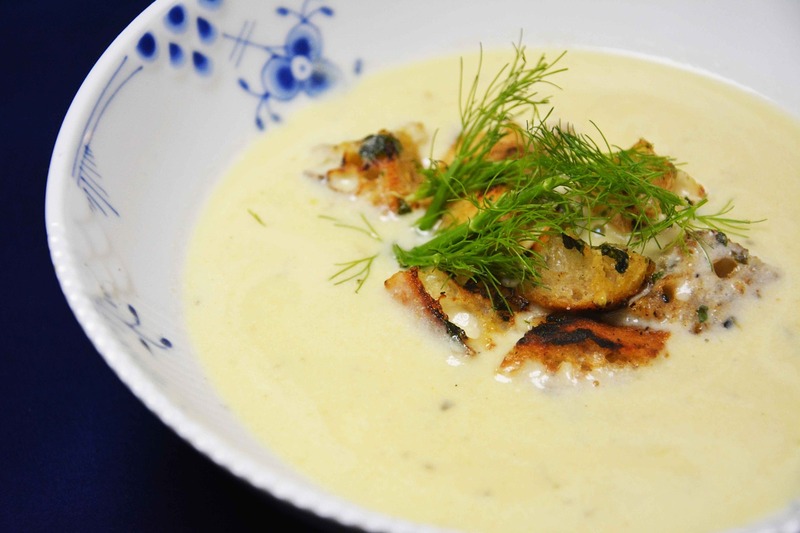
The ajoblanco is a cold soup made with almonds, bread, garlic, olive oil and vinegar, traditionally served with grapes or pieces of melon. This dish, typical throughout eastern Andalusia, is especially popular in Nerja during the hot months, and represents a clear example of the humble and refreshing cuisine of the south. It is a recipe that dates back to the Andalusian period, and today it is still one of the most popular starters.
Sardine skewers
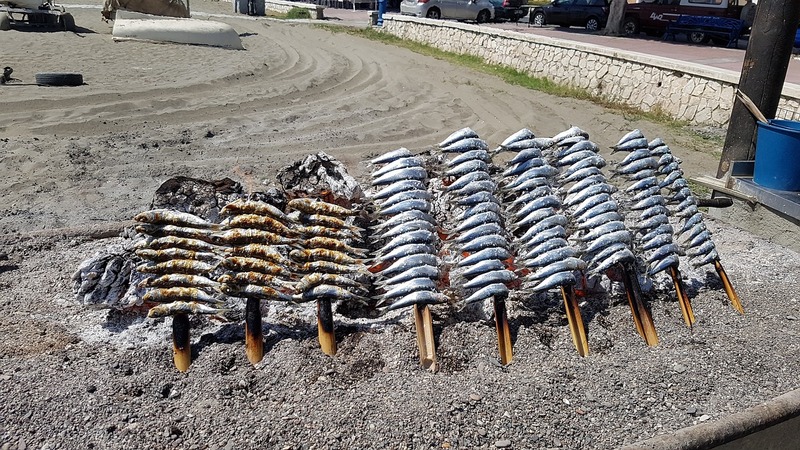
The sardine skewers are perhaps the most iconic image of the gastronomy of Malaga and Nerja. Fresh sardines skewered on wooden rods and grilled over coals on the beach, usually in traditional fishing boats converted into grills. This dish is not only a delight, but also a visual and olfactory experience. It is typical to eat them in the chiringuitos (beach bars) along the coastline of Nerja, accompanied by a cold beer or a local white wine.
Emblanco de pescado
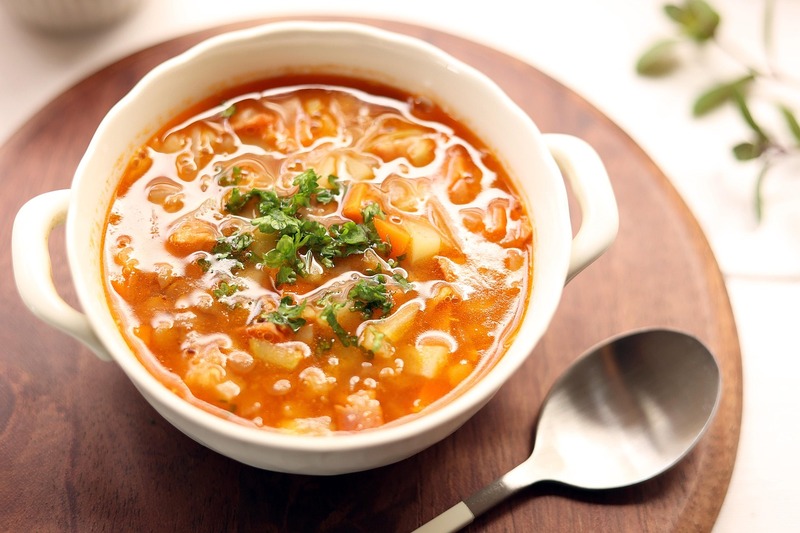
The emblanco is a light and nutritious soup made with white fish (such as hake or rosada), potatoes, carrots, onion and a light touch of bay leaf. It is a simple but very tasty recipe, which represents the "kitchen for the good" of Nerja's families. Its light texture makes it a common first course, especially in the home.
Nerjeña style kid
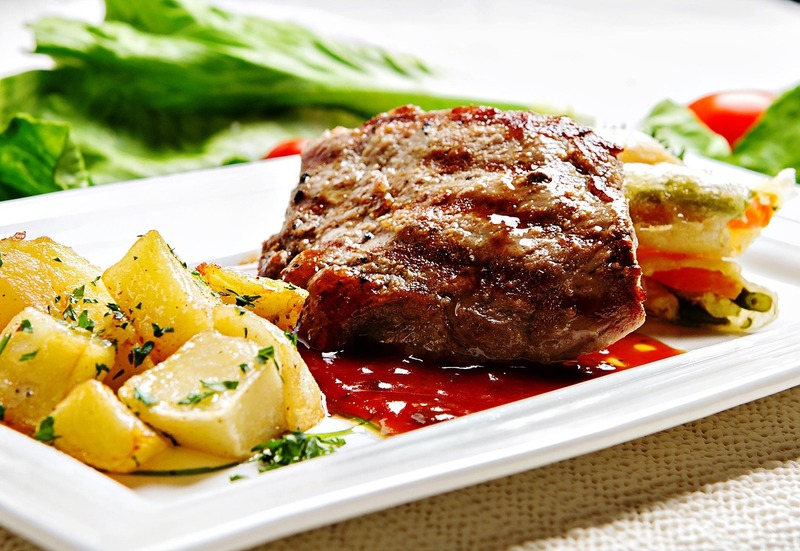
Among the meats, it is worth mentioning the nerjeña style kidThis is a traditional stew made with kid's meat, garlic, almonds, fried bread, bay leaf, dried pepper and a tasty sauce. This dish is prepared slowly and carefully, and is usually served on special occasions or in restaurants that are committed to the more traditional cuisine of the region. It is one of the most deeply rooted dishes in the area.
Sweet potatoes with cane honey
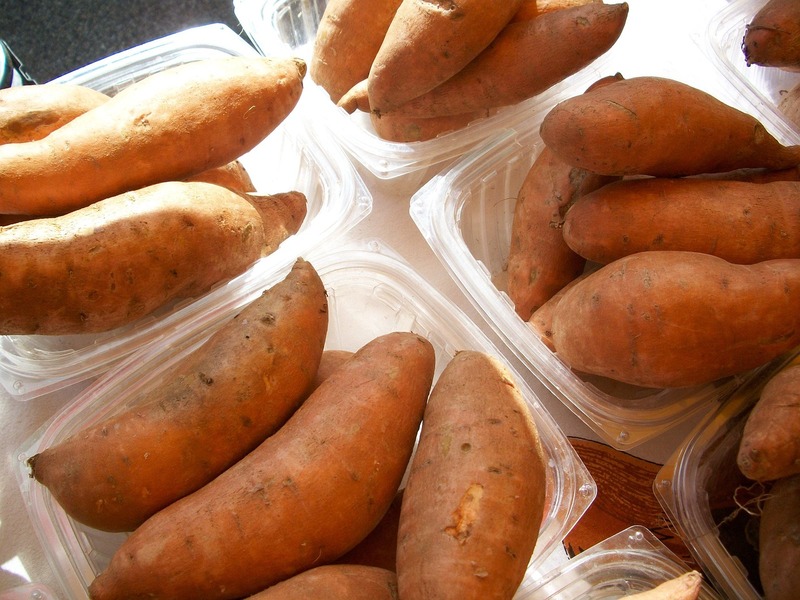
As a dessert or sweet side dish, the sweet potatoes with cane honey are a local delicacy. They are prepared boiled or roasted, and are coated with cane honey from Frigilianaan emblematic product of La Axarquía. This combination of the earthy sweet potato and the sweetness of the natural syrup creates an irresistible mixture that has been part of Nerja's culinary tradition for generations.
Crumbs
The Andalusian migas in Nerja are a hearty dish that was originally prepared on rainy days or when working in the fields. They are made with crumbled stale bread, olive oil, garlic, bacon, chorizo and sometimes fried sardines or roasted peppers. It is a tasty and energetic spoon meal that is still served in many local bars and inns, especially during the winter months.
Noodle stew
The noodle stew is another traditional stew recipe that is very common in the region. It is cooked with thick noodles, rock fish or shellfish, pepper, onion, tomato and a good broth. This seafood stew shows the influence of the sea on local gastronomy and is a recipe that is still served in traditional houses and restaurants.
Poor man's potatoes
Finally, the potatoes "a lo pobre" (poor man's potatoes) are a classic side dish that has gained prominence as a dish in its own right. They are potatoes slowly cooked with onion, peppers and sometimes egg, until they are mellow and full of flavour. Although it is a common dish in many parts of Andalusia, in Nerja it is usually accompanied by local produce and is presented with a special touch of extra virgin olive oil.
These typical dishes are not only part of the Nerjeño recipe book, but also reflect the character of a town that has managed to keep its roots alive through its cuisine. The typical food of Nerja remains one of the main attractions for travellers looking for an authentic and tasty experience on the Costa del Sol.
Don't leave Nerja without enjoying a unique gastronomic experience.
At Isabel RestoBartradition and flavour come together in every bite. Enjoy a selection of homemade tapas, typical dishes and the best local atmosphere, discover why it is a favourite among those who really know Nerja!
Local products from Nerja and their influence on the local cuisine
One of the main reasons why the typical food of Nerja is so highly prized is the quality of its ingredients. In this area in the eastern part of the province of Malaga, specifically in the region of the AxarquiaThe climate conditions are unique: a subtropical microclimate that favours the cultivation of products that are difficult to find in other regions of Europe. This natural wealth, combined with the proximity to the Mediterranean Sea, provides a varied and high quality local larder.
Tropical fruits: avocado, mango and custard apple
Nerja and its surroundings are noted for the production of tropical fruits thanks to its year-round warm climate. In particular, the avocadothe handle and the custard apple have become common ingredients in local cuisine, both in savoury dishes and desserts.
The avocado is incorporated into salads, cold creams and even garnishes for fish and seafood, providing a creamy texture and a mild flavour. The handleThe sweet and sour pepper, for its part, appears in sweet and sour dishes or as an accompaniment to white meats, and is also used in sauces to add an exotic touch. The custard appleThe sweet white flesh is usually reserved for desserts or simply served as fresh fruit.
These fruits, grown on farms located a few kilometres from the town centre of Nerja, represent a differentiating element of the local cuisine compared to other areas of Andalusia. They are also a tourist attraction in themselves, with gastronomic routes dedicated to their cultivation and tasting.
Cane honey from Frigiliana
Another product that cannot be missing in the Nerjeña pantry is the cane honeyproduced in the nearby municipality of Frigilianajust 6 km from Nerja. This honey, which is actually a thick, dark syrup extracted from sugar cane, is one of the most traditional and unique ingredients of the area.
It is the only place in Europe where cane honey is still produced in a traditional way, in the factory Our Lady of Mount Carmelactive since 1929. This product is mainly used in dishes such as sweet potatoes with honeyIt can be used in fried aubergines or as a finishing touch in some savoury dishes, providing a very characteristic sweet and slightly toasted flavour.
The cane honey from Frigiliana is, without a doubt, a gastronomic icon of the area, recognised for its quality and authenticity, and a clear example of how local products shape the culinary identity of Nerja.
Fresh fish and seafood from the Mediterranean Sea
Being located in front of the sea, Nerja's gastronomy is also strongly based on the use of fresh fish and seafood from the Mediterranean SeaThe fish is caught in the traditional way by local fishermen. This guarantees exceptional freshness and pure flavour, which is reflected in recipes that are simple but full of personality.
The most emblematic example is the sardine skewerwhere the quality of the fish is crucial. Also noteworthy are species such as the anchovythe pinkthe hakethe octopusthe squid and the gildedwhich are cooked on the grill, in the oven or in stews such as the noodle stew.
In addition to being part of the daily menus in households, these seafood products are the basis of many dishes served in the popular beach bars located along the beaches of Nerja, where the informal atmosphere and the aroma of firewood complete an unbeatable gastronomic experience.
Planning your next trip to Nerja?
Make your visit unforgettable with a stop at Isabel RestoBar. Traditional tapas, Mediterranean cuisine and a service that will make you feel at home - a local gem not to be missed!
Gastronomic events in Nerja
It also offers a rich and varied cuisine all year round, Nerja celebrates several gastronomic events which allow visitors to discover the most authentic flavours of their traditional recipes in a direct and festive way. These celebrations not only promote tourism, but also strengthen the link between culture, local identity and gastronomy. Among the most outstanding are the Nerja Fair and the Tourist Day.
Nerja Fair (October)
The Nerja Fair is held every year during the second week of Octobercoinciding with the day of the patron saint, the Our Lady of Sorrowsand Saint Michael the Archangel. This event is the town's main festival and one of the most eagerly awaited moments for locals and visitors alike.
During the days of the fair, Nerja is transformed into a hive of music, colour, traditions and, of course, local gastronomy. The stalls and food stalls offer an excellent opportunity to sample the typical dishes from Nerja in a festive and relaxed atmosphere. There is no shortage of sardine skewersthe crumbsthe ajoblancothe sweet potatoes with cane honeyand other specialities that form part of the culinary heritage of the municipality.
In addition, many bars and restaurants prepare special menus with traditional recipes and seasonal products. The fair is also an ideal occasion to taste local wines, typical sweets and homemade dishes in a setting where flamenco music and Malaga folklore complete the experience.
Tourist Day
Another event with great gastronomic and symbolic value is the Tourist Daywhich is usually held at the end of September. This day was created to to thank and honour visitors who choose Nerja as their holiday destination every year.
During the Tourist Day, the Town Hall and local businessmen organise cultural and leisure activities in different parts of the old town, such as the Balcón de Europa or the Plaza de España. Among the most outstanding events are the free tasting stands of typical dishes from Nerja, where attendees can taste some of the most representative recipes, such as the emblancothe fennel stewor the potatoes "a lo pobre" (poor man's potatoes).
This event aims to showcase the nerjeña hospitality through its gastronomy, an authentic and direct way of bringing visitors closer to the traditions of the village. In addition to the food, dance exhibitions, live music and folklore performances are included, making the Tourist Day a true immersion in the local culture.
Both the Nerja Fair as the Tourist Day offer a unique opportunity to enjoy the typical food of Nerja in a lively and participatory environment. These events not only enrich the visitor's experience, but also strengthen the dissemination and preservation of traditional cuisine as a fundamental part of the identity of this charming coastal town.
Do you want to taste the best of Nerja's typical cuisine in an authentic and cosy atmosphere?
Visit Isabel RestoBarwhere every tapa and dish reflects the culinary soul of the Costa del Sol. Free tapas with every drink, fresh seafood and traditional recipes await you in the heart of Nerja.
